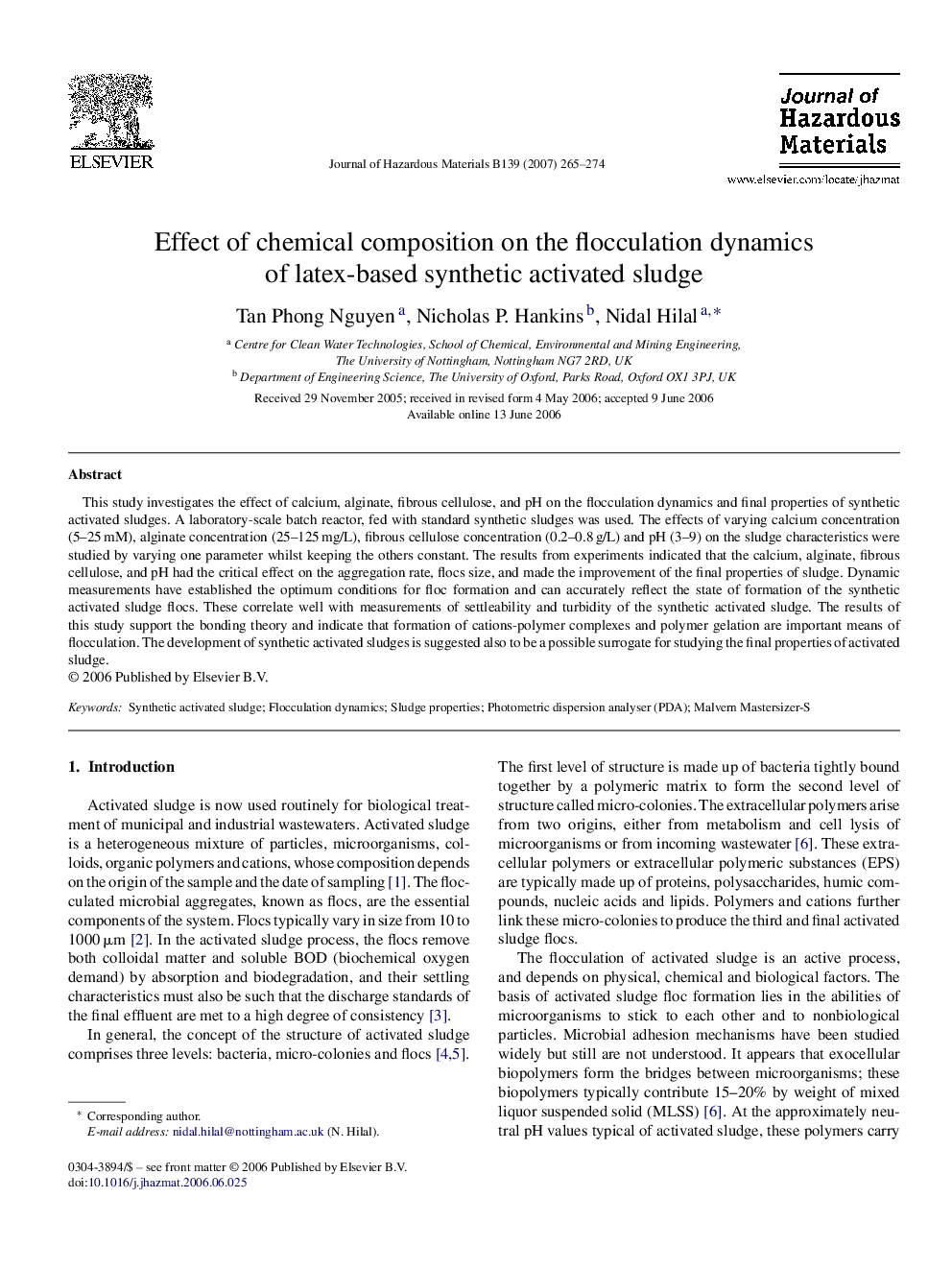| Article ID | Journal | Published Year | Pages | File Type |
|---|---|---|---|---|
| 584899 | Journal of Hazardous Materials | 2007 | 10 Pages |
Abstract
This study investigates the effect of calcium, alginate, fibrous cellulose, and pH on the flocculation dynamics and final properties of synthetic activated sludges. A laboratory-scale batch reactor, fed with standard synthetic sludges was used. The effects of varying calcium concentration (5-25Â mM), alginate concentration (25-125Â mg/L), fibrous cellulose concentration (0.2-0.8Â g/L) and pH (3-9) on the sludge characteristics were studied by varying one parameter whilst keeping the others constant. The results from experiments indicated that the calcium, alginate, fibrous cellulose, and pH had the critical effect on the aggregation rate, flocs size, and made the improvement of the final properties of sludge. Dynamic measurements have established the optimum conditions for floc formation and can accurately reflect the state of formation of the synthetic activated sludge flocs. These correlate well with measurements of settleability and turbidity of the synthetic activated sludge. The results of this study support the bonding theory and indicate that formation of cations-polymer complexes and polymer gelation are important means of flocculation. The development of synthetic activated sludges is suggested also to be a possible surrogate for studying the final properties of activated sludge.
Related Topics
Physical Sciences and Engineering
Chemical Engineering
Chemical Health and Safety
Authors
Tan Phong Nguyen, Nicholas P. Hankins, Nidal Hilal,
